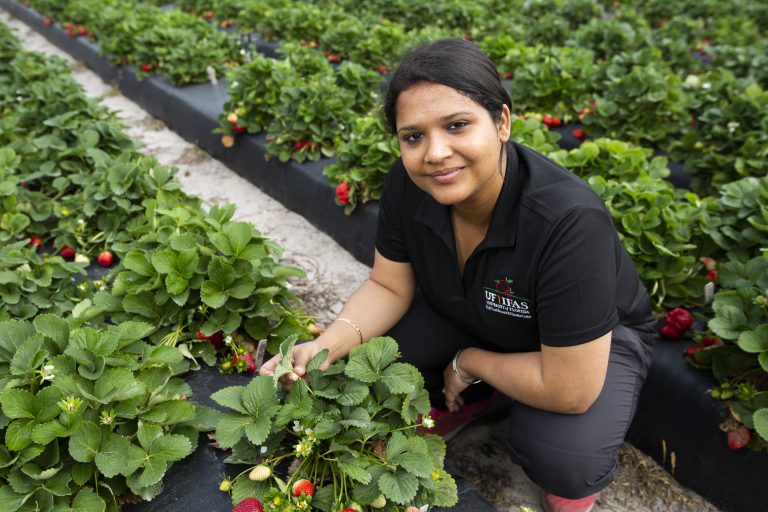Strawberry growers can use ultraviolet light and predatory mites to help control a devastating, but new University of Florida research adds a cautionary note.

This integrated approach to managing twospotted spider mites comes as helpful information for growers in Florida’s $400 million-a-year strawberry industry.
Sriyanka Lahiri, a University of Florida Institute of Food and Agricultural Sciences (UF/IFAS) entomologist, first found that ultraviolet light can help thwart the twospotted spider mite.
Lahiri has now discovered growers can combine UV light with three predatory mite species to more efficiently keep the twospotted spider mite in check. Farmers must be careful, however.
For her new study, Lahiri wanted to find out what would happen if she used UV light on the eggs of predatory mites in the research field of the Gulf Coast Research and Education Center (GCREC). Lahiri used UV to suppress spider mites at the same time.
She and her team found that the same UV doses that kill most spider mite eggs also kill almost 90% of predatory mite eggs. That’s bad news because those predatory mites won’t grow to adulthood, which means they cannot feed on the spider mites. The key to controlling twospotted spider mites is to use UV lights, then release adult predatory mites.
“This research finding informs growers about the limitations of using UV light in combination with predatory mites,” said Lahiri, a faculty member at GCREC. “Using our new information, growers can protect the predators, while using UV light for maximum spider mite suppression.”
Twospotted spider mites use their piercing mouths to feed on leaves and can reduce strawberry yield by 10% to 25%.
Most farmers spray chemicals on their strawberries to thwart the mites. But UF/IFAS scientists are trying to find ways to reduce growers’ use of miticides.
“These mites can build webs that protect them from many pest-management strategies,” Lahiri said. “Add to that their high reproductive rates, and the mites start reducing strawberry yield. This research helps combine physical and biological control strategies to help farmers avoid yield losses, without using miticides. For large-scale adoption of this technique, farmers can eventually use lightweight automated devices.”









